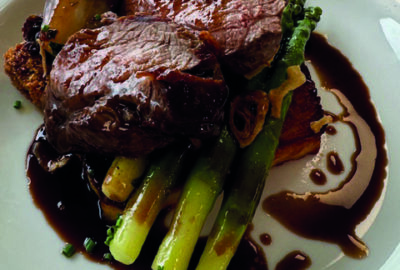Caterers are facing growing demand to provide gluten-free dishes on their menus but many remain confused about what is considered ‘safe’ or legal. Others have good awareness of what is required – but need more inspiration for gluten-free dishes.
In response, Country Range Group and Unilever Food Solutions hosted a gluten-free workshop for customers. At the event celebrity chef and face of KNORR’s gluten-free campaign, Phil Vickery shared his tips and recipe ideas.
One in 100 people in the UK has coeliac disease but only 24% of these are clinically diagnosed. In addition, there are a growing number of people who follow a gluten-free diet as a lifestyle choice. Therefore chefs who don’t cater for this market are missing out on a huge opportunity.
Vanessa Fearnehough, of the charity Coeliac UK, told the workshop: “People can look after themselves in their own home but they want to eat out and be ‘normal’. By not offering gluten-free, food operators are missing out on £100millionof business per year. If there is a group of 12 people going out for dinner and one is a coeliac, it is usually the coeliac who chooses where they are going to eat so it really is a big opportunity.”
Coeliac UK offers training (online and face-to-face) to help chefs manage gluten-free. For more information visit www.coeliac.org.uk/food-industry-professionals/caterers-and-restaurateurs/training-from-the-experts/.
Several High Street chains have already received the charity’s gluten-free accreditation, including Domino’s Pizza and Ed’s Easy Diner, who have made all of the burgers they sell gluten-free.
The terminology
The term ‘gluten-free’ is covered by law and it can only be used on foods that contain no more than 20 parts per million (ppm) of gluten.
There are lots of different ways to describe the gluten content of the food you sell. Here’s what the labels mean:
- ‘Gluten-free’ is less than 21ppm (parts per million) – equivalent to one crumb per loaf of bread
- ‘Low gluten’ is 21-100 ppm and is therefore NOT gluten-free
It is vitally important that you highlight the dishes that are gluten-free on your menu and Coeliac UK recommends the following wording is used on its GF accredited menus:
“We follow strict hygiene practices in our kitchens, but we are unable to guarantee dishes are free from all allergens. We advise you speak to a member of staff in our restaurants if you have any food allergies or intolerances. The GF symbol denotes a gluten-free dish as accredited by Coeliac UK. Processes and training are in place to ensure that meals on this menu are gluten-free. Gluten-free means foods that contain gluten at a level of no more than 20 parts per million (ppm).”
The demo
Phil Vickery has spent years experimenting and perfecting his gluten-free recipes. He first encountered the demand for gluten-free purely by chance when his Christmas pudding company was unable to buy flour at the right price and decided to use rice flour instead, which is gluten-free. He admits it was an incredibly frustrating process.
“It goes against all the normal rules of cooking, “he says. “You really do have to think outside of the box. For example, I tried making gluten-free pastry but it was tasteless and had no colour. It just wasn’t working but eventually I realised that I had to look at it from a completely different – and unconventional – angle.
“Gluten adds the stretchiness and holds the structure and, when you take it out there’s nothing there. I therefore use Xanthan gum, which mimics the structure of gluten. The pastry can be easily moulded and it is impossible to overwork it. You can make it up in batches and there’s no need to blind bake.”
As well as the pastry, which was used to make a delicious asparagus quiche, Phil also demonstrated how to make gluten-free muffins and tortilla chips, and created a gluten-free alternative for coating meats for stews and casseroles.
For full recipes, please visit www.knorrglutenfree.co.uk or YouTube: goo.gl/wLo3yi


